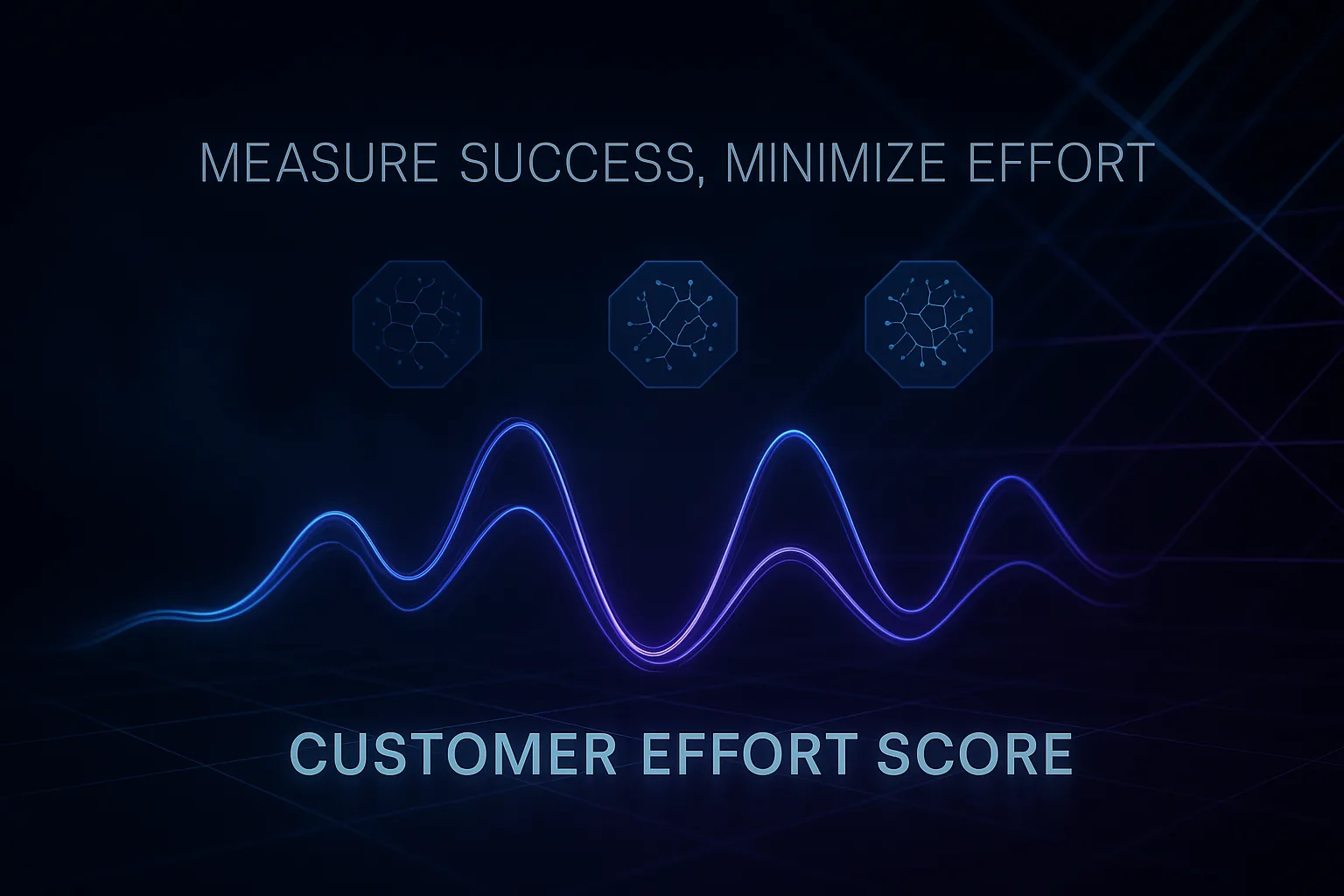The first minute sets trust
Your initial response shapes the entire customer relationship. It demonstrates attentiveness and care. Long response times can lead to frustration and customer churn, while prompt, concise replies foster positive engagement. AI now enables teams to move from silence to instant acknowledgment in seconds, all while preserving empathy and context.
Speed alone is not enough. Your first response must be accurate, on-brand, and genuinely helpful. The seven strategies below help you reduce first response time while maintaining high-quality service.
Seven practical ways AI cuts first response time
Intent detection and instant triage
AI evaluates each message to determine intent, urgency, and customer sentiment. It automatically tags the inquiry and routes it to the appropriate queue. VIPs and compliance-related topics are flagged for priority handling, leading to fewer handoffs and quicker first contact.
Draft replies that feel human, not canned
AI suggests an initial response tailored to previous interactions, customer data, and your brand’s tone guidelines. Agents then review, edit, and send these messages. You achieve quick responses without sacrificing oversight. Replies stay consistent across different customer support representatives and shifts.
SLA‑aware routing and priority scoring
Not all tickets carry equal weight. AI assesses risk based on Service Level Agreements (SLAs), communication channel, and customer value. Tickets at risk of breaching SLAs move to the front of the queue. This way, teams can focus on the most urgent queries rather than simply addressing issues as they appear.
To keep everyone aligned, connect this scoring with your First Response Time (FRT), Average Handle Time (AHT), and Customer Satisfaction (CSAT) KPIs framework. Sharing these metrics ensures transparency and efficiency.
Retrieval over your knowledge base
Agents can lose valuable time searching for resources. AI swiftly retrieves the most relevant answer or paragraph, citing its source to build trust over time. This lets agents deliver accurate first responses and move quickly to the next case.
Channel‑aware messaging
AI adapts tone, length, and structure to fit the channel, short and fast for chat, structured and detailed for email, concise and empathetic for social media. This ensures your first reply is always appropriate for the medium.
Automatic data gathering
Missing or inaccurate data, such as order IDs, slows down support. AI prompts for the right details at the right moment, updating CRM properties and verifying information. Your initial reply includes all relevant context, eliminating unnecessary follow-ups.
Helpful deflection without dead ends
Not all inquiries require a human touch. AI delivers precise answers, complete with relevant links and step-by-step guidance. If AI is uncertain, it escalates the issue to an agent with full context. This way, customers get fast help, and you keep control over the interaction.
Quality should rise with speed
Fast replies only work if they deliver value. Set robust guardrails that allow AI to operate efficiently while staying within your defined standards.
- Human in the loop: Maintain approval workflows for medium and high-risk topics.
- Style guide rules: Establish clear guidelines for brand voice, tone, banned phrases, and reading level.
- Retrieval over generation: Prioritize answers sourced directly from your official documentation.
- PII discipline: Rigorously mask, minimize, and log all sensitive personal information.
- Feedback loops: Empower agents to rate AI suggestions and improve future drafts accordingly.
What good looks like across channels
- Live chat: Respond rapidly with a helpful, genuine first line. Clearly outline the next step and provide a time frame.
- Email: Confirm receipt, summarize the issue, and provide a clear course of action. Use brief paragraphs and bullet points for clarity.
- Social: Demonstrate empathy publicly, then move sensitive details to a private channel. Keep responses human and succinct.
- Phone handoffs: When calls need follow-up, let AI draft a clear, detailed email summarizing the conversation and next steps.
Picking tools without repainting your stack
Your ideal tool should integrate smoothly with your existing CRM, email, and chat systems, without disrupting current workflows. Here is a short, unbiased list to explore:
- Zendesk AI: Best suited if Zendesk is already in place, offering tagging, routing, and drafting within established processes.
- Typewise: Our AI-backed customer service platform that connects with CRM, email, and chat. It helps agents compose faster, on-brand replies with robust privacy features, ideal for teams who want speed paired with human oversight.
- Intercom AI features: Well-adapted for chat-first organizations, and a strong fit if your product team uses Intercom.
- Freshworks Freddy or similar: A reliable choice for teams on Freshdesk, offering basics of routing and reply suggestions.
If a feature, regardless of how appealing it may seem, adds unnecessary steps, avoid it.
Measure, iterate, repeat
Define first response time metrics for each channel. Track both median and 90th percentile figures to identify slowest cases. Monitor reply accuracy and follow-up rates alongside speed, and pair these with agent workload metrics to ensure sustainable improvements.
A playbook to lower FRT
- Map intents: Identify the top 30 customer contact reasons, grouped by product and risk level.
- Prepare content: Draft concise reference answers, aim for responses under 120 words.
- Connect systems: Integrate AI with your CRM, ticketing system, and knowledge base.
- Set guardrails: Define voice, phrasing rules, and topics that require manual review.
- Pilot one queue: Start with a high-volume, low-risk support queue.
- Measure daily: Track first response time, accuracy, and agent edits each day.
- Tune prompts: Refine AI instructions based on flagged replies and feedback.
- Add data capture: Prompt for essential customer details early on to reduce follow-up loops.
- Expand channels: Once successful, apply the setup to additional channels like chat or email.
- Review and share: Publish results and insights internally. Continue improving weekly.
Common pitfalls to avoid
- Too many workflows: Each added branch can slow things down. Streamline wherever possible.
- Overuse of templates: Repetitive language can feel robotic, keep your communication clear but varied.
- Ignoring long tails: A handful of slow cases can erode trust. Investigate outliers and resolve the underlying issues.
- No training data hygiene: Outdated macros or articles waste time. Regularly archive and update resources.
- Measuring only averages: Averages hide problems. Watch the 90th percentile for a more complete picture.
See it working in your stack
If you want to accelerate your first replies without overhauling your entire system, consider a pilot project. Typewise fits seamlessly into your current tools, helping agents deliver accurate, on-brand replies with speed. Start a conversation with our team and discover what this could look like for your organization. Talk with Typewise.
FAQ
How does AI improve first response time without sacrificing quality?
AI can quickly interpret intent and urgency, streamlining ticket routing and reducing handoff times. However, relying too heavily on automation risks losing human oversight, potentially leading to generic responses and missed nuances in customer queries.
Why is speed alone inadequate in customer service responses?
Fast replies mean nothing if they're off-brand or unhelpful, risking customer satisfaction. A balanced approach is necessary, where speed is complemented with accuracy and relevance to maintain trust and loyalty.
What are the risks of overusing AI-generated content in customer service?
Dependence on AI-generated replies can lead to sterile communication, making interactions feel distant and mechanical. It's crucial to ensure AI suggestions reflect the brand's tone and allow human agents to fine-tune responses.
What should be considered when setting up AI tools in existing workflows?
Integration without disrupting existing systems is key – the goal is efficiency, not complicating processes. Over-customization or adding unnecessary features can slow down operations and increase the risk of errors.
How can companies ensure data security while using AI in customer service?
AI systems must prioritize data privacy by minimizing the collection of sensitive information and applying rigorous anonymization techniques. Failure to do so not only risks compliance issues but also erodes customer trust.
What are the dangers of measuring only average response times?
Averages can paint an incomplete picture, masking outliers and potentially ignoring slow, problematic cases. Prioritizing metrics like the 90th percentile ensures a more comprehensive understanding of customer service performance.
How can AI leverage existing knowledge bases effectively?
AI should retrieve and reference relevant information directly from verified sources, not rely on generating new content. This approach safeguards accuracy and consistency, reducing the risk of outdated or incorrect information being communicated.





